Cadillac is covering both ends of the spectrum at this month’s New York International Auto Show, offering up both the new entry-luxury XT4 sport-utility vehicle, as well as a high-performance version of its flagship sedan, the new CT6 V-Sport.
The two mark the start of an unprecedented product roll-out that, Cadillac President Johan de Nysschen announced during a NYIAS news briefing, will add 11 models to the brand’s line-up by 2021. But that’s only a glimpse at what’s actually coming, the South African-born executive revealed in an exclusive interview with TheDetroitBureau.com.
Long positioned as “the standard of the world,” Cadillac fell off its perch in the 1990s, dethroned by high-line European and Asian imports like Lexus, BMW and Mercedes-Benz. It’s had a few false starts in its bid to regain its former glory. But de Nysschen has put in place a do-or-die strategy that is aimed at more than doubling Caddy’s global volume with a mix of new products, advanced powertrains and a new approach to sales and service. Much will depend on the booming Chinese luxury market, but the Caddy chief is also determined to take on key rivals in their home, European market.
“I can tell you,” de Nysschen said during a conversation that went on twice as long as was originally planned, “there’s a lot more coming after 2021 that we have not talked about.”
Considering what Caddy has revealed, that’s substantial. Not many years ago, the brand had to get by with only a handful of products, primarily the CTS sedan and two aging utility vehicles: the SRX and the Escalade. It now has three sedans, a redesigned Escalade, a new midsize replacement for the SRX dubbed XT5 and, in the months ahead, a smaller ute, the XT4 targeting what has become the fastest-growing segment in the luxury market.
There will be at least two more utility vehicles to come, including a crossover model to slot in-between the XT5 and Escalade, revealed de Nysschen. Meanwhile “we’re looking very hard” at opportunities in the emerging segments below the XT4, products that would go up against the likes of BMW’s X1 and new X2 crossovers. Expect to see that translate into a production Caddy, sources confide, by early in the coming decade.
De Nysschen, who turned 58 days before the XT4 unveiling, has had a rare view of the luxury end of the auto industry. He was serving as North American chief for Audi when he was recruited to Infiniti in 2012 as its new global boss. But two years later, he unexpectedly returned to the States to take over Cadillac. One of his first decisions was to relocate its headquarters to New York City to give the brand some breathing space.
(Cadillac’s new XT4 was just one of the best debuts at the 2018 NYIAS. Click Here to see our favorites.)
It wasn’t a complete separation. Parent General Motors may have made some big promises but it was also watching the brand’s progress closely, especially in light of the dramatic changes sweeping through the auto industry. While de Nysschen and his team have gotten substantial amounts of capital, they’ve also had to rework their original plan book, among other things culling some passenger car products and shifting more towards utility vehicles.
That said, Cadillac won’t become an all-truck brand. And, it appears, one of de Nysschen’s pet projects just might have survived the shake-up. The new XT4, he suggested, was heavily influenced by the wildly popular Escala concept vehicle of a few years back. Recent scuttlebutt has suggested that work has resumed on a production version of that long, lithe, coupe-like sedan.
“I can tell you I have been following the speculation myself,” he teased, adding that, “This brand is certainly worthy of a halo execution.” How soon? De Nysschen coyly suggested, “We will do things at the right time.”
The Escala is apparently not the only product that seems destined to join the next wave of new Cadillac products. Expect to see an assortment of electrified vehicles, as well, de Nysschen declaring that, “electrification is part of our future.” Parent GM recently announced to add 23 all-electric models by mid-decade, as well as plenty more plug-ins and conventional hybrids, “and Cadillac is featured very prominently.”
The automaker’s first entry, the ELR plug-in hybrid, was a dismal failure, sales barely topping 3,000 before Caddy pulled the plug. It was a beautiful design, but de Nysschen admits it simply didn’t have the performance and other attributes luxury buyers expected. Future models will “have to be true to the characteristics Cadillac values.”
(Click Here for a closer look at the Cadillac XT4.)
As models like the new CT6 V-Sport and CTS-V demonstrate, performance is one of the key attributes. But, as competitors like Audi, BMW and Porsche – and even Aston Martin and Ferrari – are discovering, electric vehicles don’t have to be slow and stodgy. They can be absurdly quick and peg the fun-to-drive needle.
While declining to discuss specific product plans, de Nysschen suggested that there will be some future products offering an assortment of different powertrain options, including both gas and electric. There will also be some models exclusively relying on battery power.
Cadillac has been struggling to gain traction for its comeback plans for nearly two decades, ever since it launched the original CTS sedan and debuted its Art & Science design language. The hard lines and creases of the original models has softened substantially with new models like the CT6 and XT4, not necessarily to the liking of all Caddy fans. Where does that evolve to next?
“Art and science debuted in 2002,” noted de Nysschen. “We are now moving into iteration three. The direction we are moving into, as you saw with Escala (in concept form), is an indication of where we are heading. You have to progress or you get dated and stagnate. The modern (plan) calls for an injection of more organic shape, more curves than creases.”
Product alone won’t be enough to transform Cadillac, industry observers caution, and de Nysschen agrees. The brand has to dramatically change the way it sells and services its vehicles to draw in new buyers and keep current owners loyal. One cutting-edge move was the introduction of Book by Cadillac, a New York City-based pilot program allowing prospective customers to subscribe, rather than lease or buy, their vehicles. Other than gasoline, Book builds in all costs, including insurance, but even more appealing, it lets subscribers swap out among various Caddy models up to 18 times a year.
Book has so far booked only “a small number” of customers – Caddy won’t reveal precise numbers – but it is only just expanding to Los Angeles and other markets and hopes to now start building momentum. It certainly has the competition sitting up and paying attention. Volvo, Porsche, Audi, Mercedes, Lexus, BMW and Lincoln are among rivals who’ve either set up, or are soon planning to launch subscription programs of their own.
While Book isn’t doing much for the numbers, Cadillac did manage to log its second-best year ever in 2017, global sales rising 15.5%, to 356,467. And it’s jump another 22.5% for the first three months of 2018, de Nysschen at the NAIAS predicting this well be the brand’s “best year ever.” The key word is, of course, “global.” In its heyday, the brand was essentially limited to the U.S., with only a marginal presence in Europe and other parts of the world. It now has two centers of gravity, and with 2017 demand jumping a solid 50.8%, China is becoming increasingly dominant.
“China has contributed very positively,” suggested de Nyscchen, but he was quick to stress that Caddy isn’t trying to develop “parallel product portfolios” for its two lead markets. “We think luxury customers worldwide have a lot in common in the attributes they desire.”
That’s not entirely accurate. Chinese luxury buyers are more likely than those elsewhere to have professional drivers and spend much of their time in the back seat. But the added features that demands has proven appealing to motorists in the U.S., as well.
More importantly, the added sales from China “has enabled the investment in the expansion of Cadillac,” explained de Nysschen. “It is what makes (all the products to come) economically feasible. It has fueled our ability to compete even harder in the U.S. and we can enter market segments we couldn’t have” without China.
It is also fueling thoughts of even greater expansion. Cadillac, over the decades, has made a series of half-hearted attempts to take its fight to the heart of its competition, but its European network is currently all but an afterthought, pitching primarily to eccentric buyers who just demand something different.
Looking forward, however, “If we want to continue the natural evolution of our globalization it would be very hard for us to ignore Europe and its potential,” de Nysschen said.
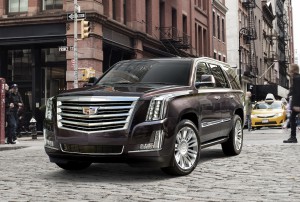
The Escalade has had its problems - it ranked last, tied with the Tesla Model X, in the latest Consumer Reports vehicle reliability study.
One thing may be helping open the door: the decline of diesel. Oil-burners long held about half the overall European market, even more in the luxury segment. But the Volkswagen diesel scandal – which is now enveloping a number of other brands – appears to be turning off many consumers. And a number of luxury brands appear to be backing away, shifting focus to electrification, especially as European regulators in heartland markets like France and Germany, begin to crack down on the technology.
In a market more focused on electric power, and less on diesel, de Nysschen sees tremendous opportunity, though it may take some time, “sometime in the next decade,” he said. “We are in no rush.”
Even without Europe, Cadillac is targeting major growth, the brand boss revealing that “Our current plans with the product portfolio we have (already) announced takes us into somewhere between 600,000 and 700,000 vehicles in which you have a very profitable operation, thank you.” And that’s just based on what Caddy plans to launch by 2021.
Of course, this isn’t the first time the GM luxury brand has laid out some dramatic targets. But after developing substantial momentum with the original CTS it lost a lot of steam with the addition of some lackluster product. It has ridden a roller-coaster ever since.
The debut of the XT4 could deliver the real test of Caddy’s strategy. The larger XT5 is already the brand’s best-seller, accounting for more than two out of five sales last year. It may no longer be the “standard of the world, but if the smaller ute can connect with buyers in both the U.S. and China, Cadillac could finally be setting itself up as a real first-tier player again.
(BMW becomes the latest to enter the “subscription” market. Click Here for more.)

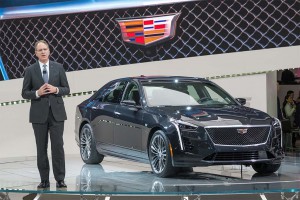
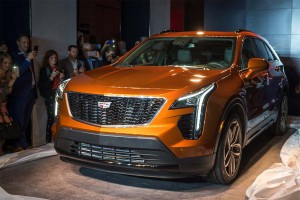
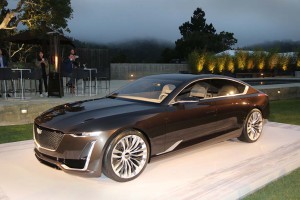
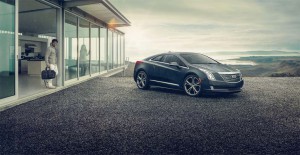
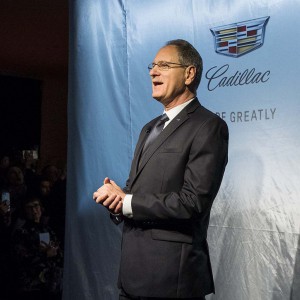
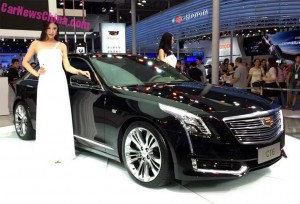
It’s nice to dream.
“Long positioned as “the standard of the world,” Cadillac fell off its perch in the 1990s, dethroned by high-line European and Asian imports like Lexus, BMW and Mercedes-Benz. It’s had a few false starts in its bid to regain its former glory.”
I knew you had to include this bit. You always do. They tend to lead with this tired paragraph, but this you snuck it in at paragraph three.
Dude, we all read Wikipedia.
Wickipedia copied me….LMAO.
And the line is still accurate.
Some editorial dinosaurs are still stuck in the “we hate anything domestic” 90’s too.
I can’t imagine you are referring to us…or me, in particular.
Paul E.
“The automaker’s first entry, the ELR plug-in hybrid, was a dismal failure, sales barely topping 1,000 before Caddy pulled the plug.”
Actually ELR sales were 2,958. Still not a true sales success but please get your facts straight in articles. Also, many who purchased ELRs found them to be excellent vehicles albeit somewhat overpriced.
Thanks for the catch. That line was supposed to read, “barely topping 3,000,” and will immediately be corrected.
Personally, I loved the looks of the ELR, inside and out, and it was intended to show what Caddy interiors were going to be going forward. But, as you noted, it was overpriced and delivered no real performance gains over the stodgy, 1st-gen Volt. It didn’t go far enough…except on its aggressive pricing.
Paul E.